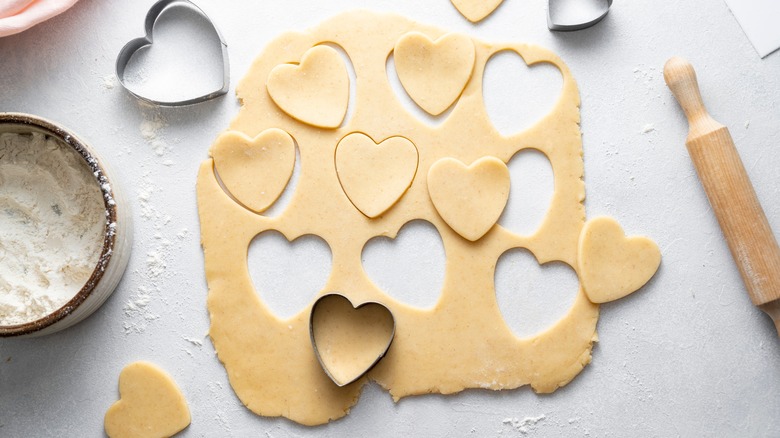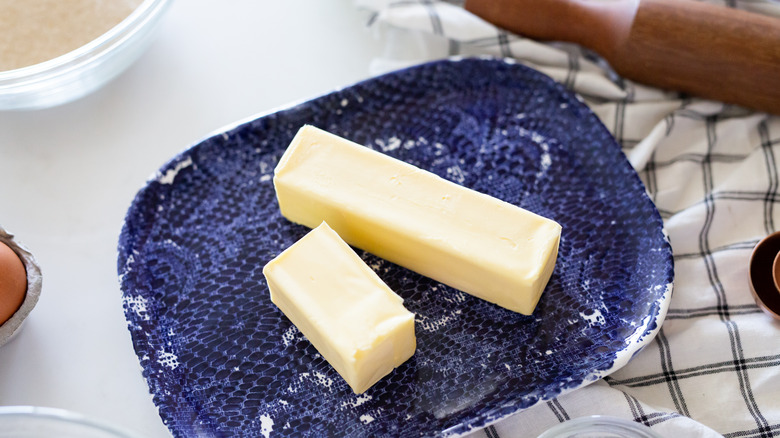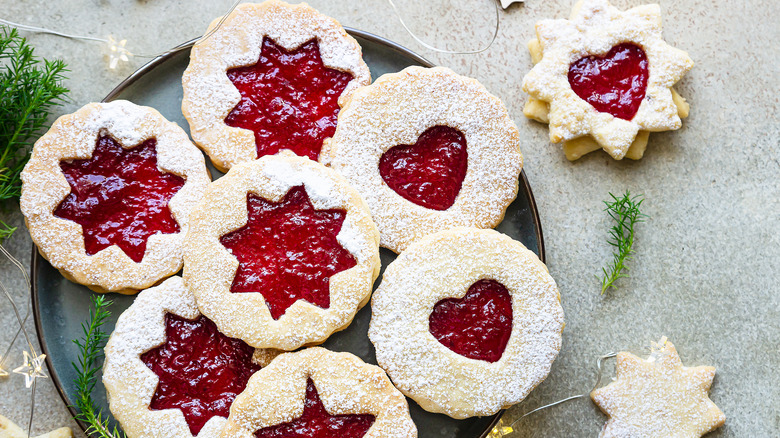The Technique You Need For Perfectly Formed Sugar Cookies
Homemade sugar cookies are a real treat, and they are essential for many holidays, including Valentine's Day and Christmas. Of course, almost every family has their own recipe for the scrumptious bites, but they all pretty much start the same: You start with softened butter, add sugar, then flour, roll out the dough, and then start cutting. The best sugar cookies are tender yet slightly crisp, flavored with vanilla or spices. The edges are sharp and defined, but the cookies melt in your mouth. That's the goal anyway.
If you're struggling to construct the perfect sugar cookies, you might benefit from taking a look at a special technique that is practically guaranteed to bring them up a level. Plus there's a bonus: In addition to perfecting the recipe, this tip will save you time. According to HuffPost, you don't have to leave the butter on the counter to soften, or put it in the microwave, which can result in oversoftening and inferior cookies because you break the emulsion. In fact, you can just use the butter straight out of the fridge.
I can hear you sputtering now! But ... but ... but won't it be impossible to mix the butter with the sugar? Won't the texture of the cookies be weird and hard? Won't it be infuriating mixing the cold butter with the other ingredients? The answer to all of these questions is no. Here's why.
Plasticize your butter
The trick to using butter directly out of the fridge is called plasticizing. According to America's Test Kitchen, this decidedly-unappetizing word is actually a great technique that can help you eliminate one of the biggest frustrations of baking. After this tip, you may never soften butter any other way again!
To plasticize butter, put it on the counter and pound the daylights out of it with a rolling pin. The folks at America's Test Kitchen use a food processor to plasticize the butter, and it works well. (If you choose this method, whiz the butter with the sugar, and it will save you even more time.) The butter holds its shape and stays firm enough so the sugar crystals can create tiny holes in the fat, which creates the desirable crisp yet tender butter cookie texture, according to King Arthur Baking. And there's another bonus: The butter stays cold, at about 50 F, which means you can roll the cookies out as soon as the dough is mixed, with no chilling step.
How do you know when the butter is properly plasticized? King Arthur Baking says that the dough should be pliable but still firm. If you try to fold it, the butter will bend but not break. And the temperature of the butter should be about 50 to 55 F when you're done.
Make perfect sugar cookies
Now that your butter is plasticized, start mixing the dough. You may want to use a stand or hand-held mixer because even though the butter is softer than it was before you plasticized it, it's not as soft as you're probably used to. Roll out the dough on a lightly floured board with a lightly floured rolling pin, and get out your cookie cutter stash.
Although this is most sugar cookie fans' second-favorite part of the process, it doesn't always have to immediately precede baking if that isn't working in your schedule. In fact, according to MasterClass, if you don't want to bake the cookies right away, you can cover and refrigerate the dough for up to three days, or you can roll it out now and freeze the sheets for later use.
Make beautiful and elegant Linzer cookies, with a perfectly sharp edge to highlight that gorgeous jam, or make tried-and-true frosted sugar cookies. For a change of pace, try spiced holiday sugar cookies, or easy sugar lavender cookies made with turbinado sugar. Then frost them with royal icing, preferably with your kids, and enjoy every last bite.


